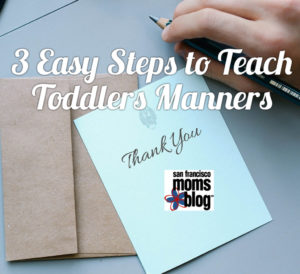 Some of my earliest childhood memories with my parents and grandparents are of them teaching me basic table manners and social manners. The lessons continued well into my high school years, and, every now and then, when I catch myself slouching, I hear my Papa or Mama’s voice telling me to stand straight.”
Some of my earliest childhood memories with my parents and grandparents are of them teaching me basic table manners and social manners. The lessons continued well into my high school years, and, every now and then, when I catch myself slouching, I hear my Papa or Mama’s voice telling me to stand straight.”
Among the many values I’ve carried with me into adulthood, having good manners has always been important. For adults, the concept of behaving in a socially acceptable way makes sense. Be kind and respectful to everyone (within reason), and when we’re unsure how to behave in a certain situation, like traveling outside of the United States, we have an abundance of resources available to us.
My favorite book on manners is Letitia Baldridge’s “Complete Guide to New Manners.” I liked it so much that I bought the second version on “Excuse Me! (A Little Book of Manners).” Both are fantastic resources, yet, neither could prepare me for the challenge of teaching my toddler good manners. Here are a few lessons we continue at home with our daughter, Ilse.
Start with please and thank you
After Ilse learned to say “May-May” for mom and “Dada,” we taught her “please” and “thank you.” They were the easiest phrases and concepts to teach her, and they apply to most cultures and social settings. Pick the manners that work for you and your family. We try to be excellent examples for her by using “please” and “thank you” with each other in front of her. We also tell Ilse why she needs to use them when she communicates with us. For example, whenever Ilse asks for a snack or a toy, we respond with “What do you say when you want…” After she receives the item she wants, we follow with, “What do you say after you receive what you want.” At her daycare, her teachers reinforce these phrases, and it helps that she and her classmates are learning to use these manners with each other.
Be consistent
Developing good manners requires getting in the habit of engaging in good manners. Just as my husband and I consistently reinforce the use of “please” and “thank you, ” we’re also consistent about other manners, like greeting others. Ilse is great with ‘Bye-bye” and is now grasping “Hi.” Sometimes. she’s cranky or just not in the mood, so we don’t push too hard, but we keep at it. If Ilse forgets, that’s okay. After all, she is still learning, and she’s not even two years old. To understand a manner’s importance, Isle needs to see it every day, so consistency is essential.
Inject some fun
Lastly, it’s important to make learning manners fun. Learning manners does not need to be boring or humdrum. Television shows like “Sesame Street” make learning manners fun. Reading books on manners is also enjoyable. One of our favorite books is Karen Katz’s “Excuse Me! (A Little Book of Manners).” We also like to make it a game with Ilse to test how much she remembers. We reward her with her favorite sweet (usually a piece of chocolate), a hug, or clapping. It’s as exciting for Ilse to master a manner as it is for us to witness her doing it.
Like any parent, it’s my goal to raise a child who is kind and respectful of others. I would love for Ilse to adopt the same fervor for good manners that I have and perhaps develop even better manners than my husband and me. For now, I’m happy to hear her say “please” and “thank you.” And if she were able to read this article, I’m sure she’d also remind me to sign off by saying, “Bye-bye.”






















